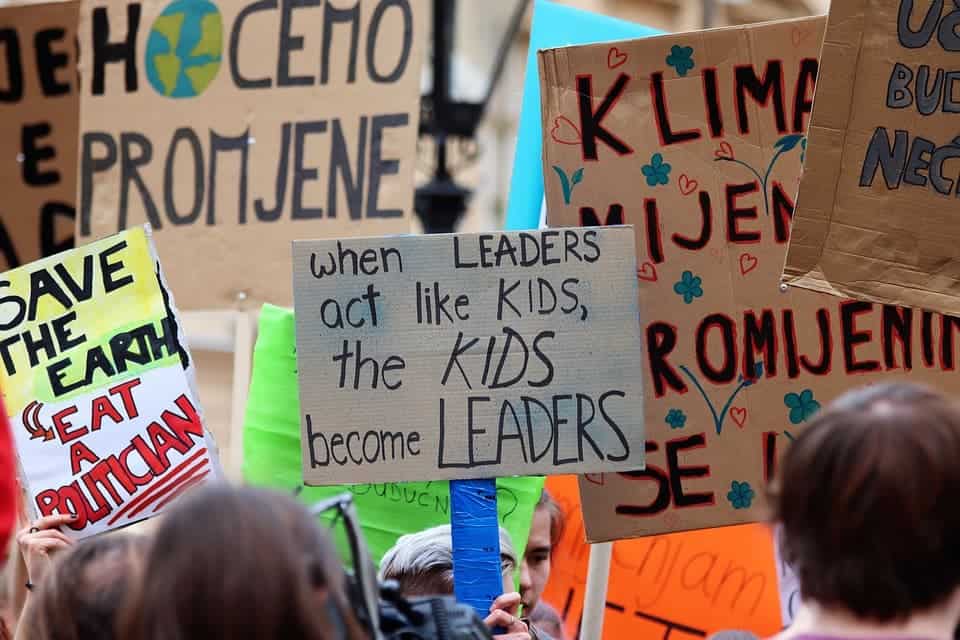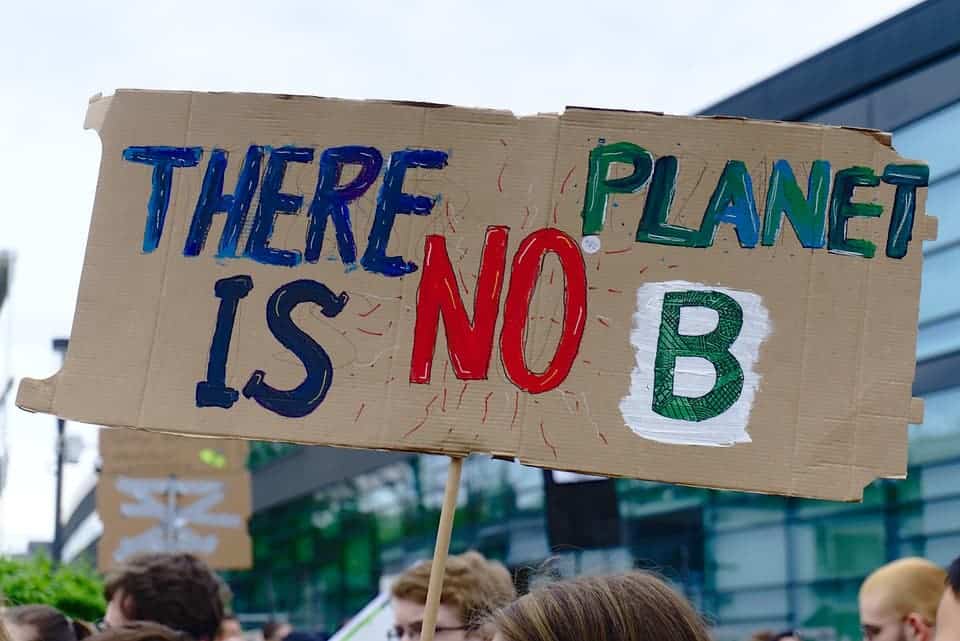
I distinctly remember the first time I learned about greenhouse gases. It was exactly 20 years ago, in my 4th grade, during a class called Natural Science. These gases work just like they do in a greenhouse, but the greenhouse is the entire planet. The more greenhouse gases we put out in the atmosphere, the hotter Earth will get.
It seemed pretty logical and straightforward, and it was the first time I became aware that humans can affect the Earth — not an area or some parts of it, but the Earth as a whole.
Fast forward a few years, I’m in middle school and we’re watching a movie about climate change. It wasn’t a groundbreaking documentary, but something that the teacher said before playing the clip stayed with me: “Now, I don’t want you to panic or anything. You can worry about this when you’re grown up.”
Kids today don’t really have a particular day when they were taught about climate change. It’s something that was always there: they were born in it and they live through it. Twenty years ago, teachers had the luxury of saying “don’t worry about this now” (although that was also probably not the case) — but teachers today would be irresponsible to say the same.
Global warming can be a natural phenomenon. Indeed, our planet’s climate has changed numerous times through the geological ages. But this time, it’s anything but natural. A mountain of robust and diverse evidence clearly shows that our greenhouse gas emissions are to blame for the current warming trend. It’s a process with enormous inertia, which we will greatly struggle to contain — even if, in the most optimistic scenarios, we do limit our emissions.

Today, children are growing up with this aura of pessimism around global warming. Any good-natured child would ask (and indeed, millions have asked) what is being done to stop this. A truly honest answer could only be: not nearly enough.
Sure, we are starting to produce more renewable energy, which is a key aspect — but we’re only doing so where it makes economic sense. A recent study labeled recent projects to build renewable energy as a success of the free market, and rightfully so. But such applause hides the real issue: society and politicians aren’t marching intently towards renewable energy; rather, it’s more an issue of renewables becoming cheaper than ever, which encourages markets to transition to them.
You could talk about limiting deforestation — another vital (and cheap) component of limiting climate change. Efforts to curb global deforestation have been mildly successful for a few short years, but now, the trend has reversed and deforestation is accelerating again.
“Surely,” the child would continue, “there must be a plan.” With all their money and all their power, adults must have a plan to stop all this — and we do. It’s called the Paris Agreement, and it was agreed upon only four years ago, after massive efforts. But the Paris Agreement, which was supported by every country on Earth, was criticized by many researchers as not ambitious enough. The plan is to limit the warming to 2 degrees Celsius over pre-industrial levels, but there is a lot of evidence that 2 degrees is already too much. As if that wasn’t enough, most (if not all) countries on Earth are not doing their part, as they all agreed on in the Paris Agreement. Some countries, like the US, have even declared their intention to leave the Paris Agreement, highlighting just how fragile a non-enforcing agreement really is.
So in truth, dear children, we don’t really have a plan. Many talented people are working in this direction, and they’ve achieved remarkable things. The companies pledging to go 100% renewable, the reforestation projects in Africa, policymakers implementing policies that do work, they’ve all done an amazing job. But when you zoom out and you look at what mankind as a whole is doing, it’s impossible to feel like it’s enough.
Some kids might simply brush it off and not think about it. Others might not ask the question in the first place. But many of them would feel some mixture of anger, sadness, and powerlessness. One such kid is Greta Thunberg. One year ago, she protested, alone, in front of the Swedish Parliament. Today, she is the spark that lit a fuse hitting millions of people, in one of the largest climate protests in history. But she is just one such child. Many others who have not gained notoriety felt the same as her.
They are asking us to do the things we ask them do: listen to scientists, care about the environment, and stand up when something is not right. Much of the world, particularly some of the darker corners of the media, were in awe that this happened. They even spoke about it negatively. “Leftist propaganda,” some called it. “A puppet” and worse, Greta Thunberg was called. The fact that children protesting and asking for a better future are ignored or even worse is in itself justification that they have a reason to protest in the first place.
It’s common for adults to decide the fate of the youth, it’s how society works. When you’re 16 and there’s a voting year, you will be an adult for 2 years, with many aspects of your life decided by a government you didn’t vote for. But this is more than just an electoral cycle — this is a geologic process of gargantuan scale, which will take centuries or even more to rectify. It can doom future generations to problems that they never caused not just for a few years, but for their entire life — let alone irreversible damage done to the environment.
This is simply not fair, and our lack of progress is not acceptable. This is why the kids are protesting.
Because we just don’t get it.


